NCERT Solutions For Class 8 Science Chapter 13 Light LAQs
Question 1. How is the phenomenon of reflection used in making a kaleidoscope? What are the applications of a kaleidoscope?
Answer: A Kaleidoscope is a cylinder with three mirrors containing loose, coloured objects such as beads or pebbles and bits of glass. As the viewer looks into one end, light entering the other creates a colourful pattern due to reflection. Its applications are given below
It works on the principle of multiple reflection, where several mirrors are placed at an angle (usually 60°) to one another. Typically, these are three rectangular mirrors set at 60° to each other, so that they form an equilateral triangle.
The 60° angle creates seven duplicate images of the objects, 5 at 60° and 2 at 90°. As the tube is rotated, the tumbling of the coloured objects presents varying colours and patterns.
It is used in decoration purposes, attractive toys, etc
NCERT Class 8 Science Chapter 13 Light LAQs
Question 2. Write down the names of parts of the eye in the blank spaces shown in figure.
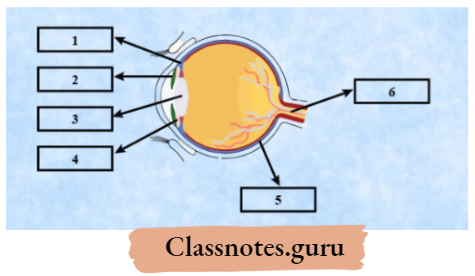
Answer:
- Ciliary muscles
- Iris
- Lens
- Cornea
- Retina
- Optic nerves
Question 3. Explain the reason for the following statement “we usually take sometime to see the objects in a dim light room, when we enter into the room from bright sunlight outside”.
Answer: Since, when we are in the bright sunlight at that moment iris causes the pupil to become smaller, so that a little amount of light can enter the eye. Moreover, the rods of retina are also made to get adjusted in the same manner. And when a person enters into dim light room, then iris takes sometime to increase the pupil diameter, due to which large amount of light enters the eye, so that’s why when we enter into the room from bright sunlight outside, then we usually take sometime to see the objects in a dim room.
Question 4. The picture shows a light ray from a candle falling on a mirror. P, Q, R, S and Tare five points behind the mirror.
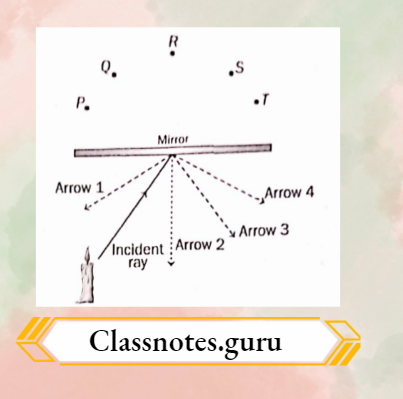
Answer the following questions based on the above information.
1. Which arrow represents the light ray reflected by the mirror?
- Arrow 1
- Arrow 2
- Arrow 3
- Arrow 4
- At which point, will the image of the candle form? Will the image be erect or inverted ?
- Which of these statements is true for reflection of light rays? Choose ‘Yes’ or ‘No’ for the correct response
Answer:
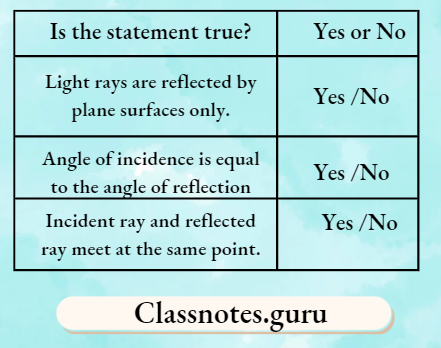
- Arrow 2 is normal to the mirror. Hence, by measuring angle between incident ray and arrow 2, the reflected ray will be arrow 3. Option (3) is correct.
- At which point, will the image of the candle form? Will the image be erect or inverted?
- Extend the arrow 3 behind the mirror. It will meet to Q. Hence, image will be formed at Q. Plane mirror always forms the image in the same orientation as the object. Since, the object is erect, hence the image will also be erect.
- Which of these statements is true for reflection of light rays? Choose ’Yes’ or ‘No’ for the correct response.
Answer: (1) No, (2) Yes, (3) Yes.
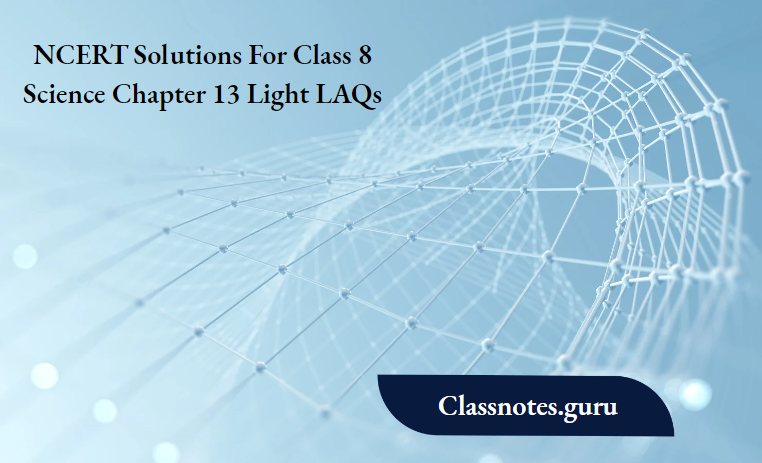
NCERT Solutions for Class 8 Science Chapter 13 Light
Question 5. The diagram shows how on object h seen through n periscope, x nnd y oro two angles on tho path of the light ray.
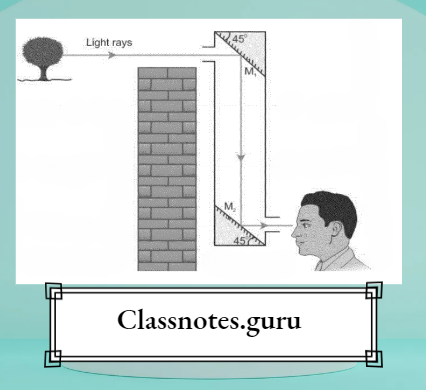
1). Which condition is required for the periscope to work properly?
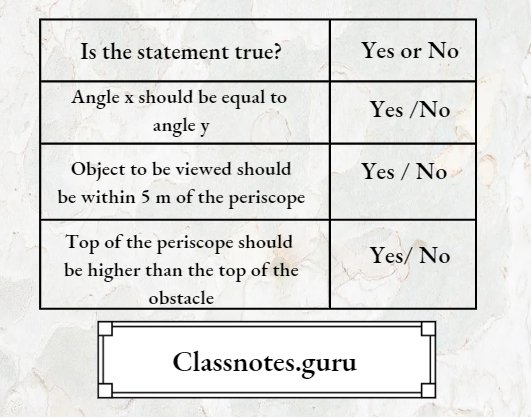
Answer: (1) Yes (2) No (3) Yes
Question 6 How many times is a light ray is reflected in the periscope?
- Once
- Twice
- Thrice
- Four time
Answer: 2. Twice
Light LAQs Class 8 NCERT Solutions
Question 3. Reema has a multi-coloured disc. She finds that the disc appears white when she spins it rapidly.
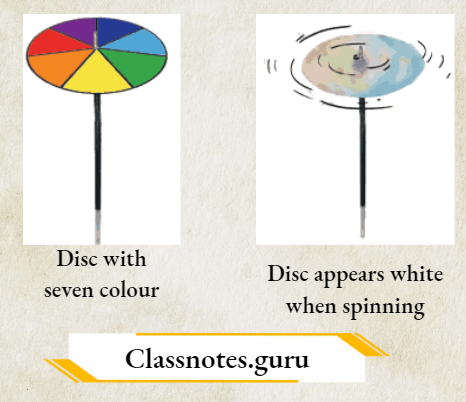
1.What can be concluded from the picture?
- All discs are multi-coloured
- All spinning objects appear white
- Objects lose its colour on spinning
- White is a mixture ofseven different colours
Answer: 4. White is a mixture ofseven different colours

2. Splitting of white light into seven colours is called
- Spectrum
- Rainbow
- Dispersion
- Repulsion
Answer: 3. Dispersion
3. White light is made up of
- 1 colour
- 3 colours
- 5 colours
- 7 colours
Answer: 4. 7 colours
Class 8 Chapter 13 Light Long Answer Questions
4. The band of seven colours that constitute white light is called as
- Rainbow
- Pallete
- Spectrum
- Wave
Answer: 3. Spectrum
